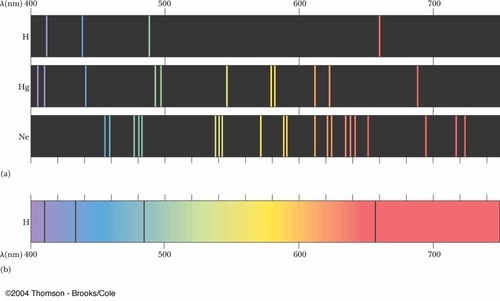Question:
This is a question regarding the recording & classification of stellar spectra. The radiation from stars travels through millions of light years to reach us. Would not the gas and dust lying between us and the stars contribute to its own absorption lines, thereby distorting the original light?
Asked by lastordovician
Answer:
The light from a star is a byproduct of thermonuclear fusion of elements inside the star. The resulting electromagnetic radiation is unique to the elements being fused. This radiation gives rise to spectral lines that enable astrophysicists to predict the chemical makeup of the star.
In other words, the different elements in stars give off different wavelengths, or colors, of light. These colors can be rather beautiful, as the emission spectrum below shows.
The light that comes from dust and gases, however, does not contribute to the radiation. Dust and gases don’t actually produce light; they reflect it. This reflection weakens and affects the direction of light, but it does not affect the wavelength, or color, of the light.
It’s like our moon— the moon doesn’t produce light itself; instead, it reflects the light of the Sun. This reflection weakens the light, which is why we’re able to look directly at the moon but not the Sun. It doesn’t, however, change the color of the Sun.
So overall, the net effect that the dust and gas have on the emission/absorption spectra of stars, if any, is very small.
Answered by Olivia D., Expert Leader
Edited by Peggy K.
Source:SciNote


